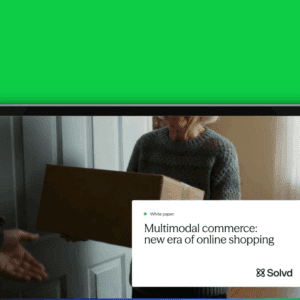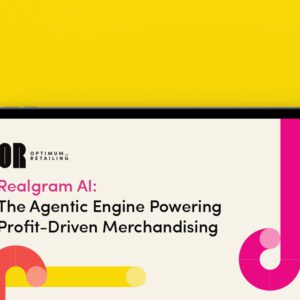By Elery Pfeffer,
Nift

There’s little question that effective advertising is
memorable. When it works, it feels like a subconscious trigger in our brain
helping us choose a product that we already know we’ll love. But if you ask a
business owner how many people have come into their shop as a result of an ad,
they have no idea.
Therein lies the problem: How many times has someone decided
to buy a hair dryer from an ad they saw on Facebook or Google? Probably not
that often.
From a retailer’s standpoint, online advertising has long
been a sound way to drive traffic to their site. And on average, small
businesses allocate 1% of sales revenue for advertising. That’s not
necessarily a small price tag, especially when margins are slim in a tough
retail climate.
While Google is projected to continue to dominate the search
ad space, Facebook is the king of display ads. The global digital advertising
market grew 21% to $88 billion in 2017, according to the IAB Internet Advertising Revenue Report, and Facebook and Google
account for 90% of that growth.
However, do they bring businesses any value beyond clicks?
What happens when the user gets to your site? Are Facebook and Google ads able
to ‘close’ the deal?
Advertising through these vehicles, or even traditional
advertising methods like printed ads and billboards, amount to a spray and pray
approach. For every 100 you reach, you may be able to convert one or two. That
may be fine for large organizations with substantial marketing budgets;
however, for smaller businesses, the ROI isn’t as clear. In fact, despite many
experts touting the effectiveness of Facebook ads, 62% of small business owners claim that Facebook ads don’t work.
So if you have a small business with limited resources and a
niche audience, what can you do beyond delivering clicks to your site? How can
you instead draw high value customers through your door?
Invest In Personal Relationships With Your Best Customers
According to eMarketer, e-Commerce accounted for only 9% of all retail sales in 2017,
leaving the vast majority of shopping revenue to in store purchases.
It’s not just about building brand awareness but attracting
the right customers you want that will bring in the recurring revenue stream
that truly sustain a business. Facebook and Google don’t offer the right level
of insight and personalization into a business’s unique target audience, let
alone build real affinity with customers.
So how can your business establish and strengthen these
ties? Word of mouth, properly leveraged, can be the most powerful marketing
tool. After all, Nielsen reports that 92% of consumers believe recommendations from friends and
family over all other advertising. Give them a treasured
experience and a great product, and you can bet they’ll share that with their
network.
When I first started Nift, I was surprised to learn just how
effective this 1:1 marketing approach would be. The AI platform matches
personalized gifts from local merchants to high value customers, and we’re
seeing some impressive results:
- 88% of customers say they’ll return, and 37% visit the store again in the next 30 days;
- 77% of customers spend more than their gift amount;
- 86% of customers are visiting the business for the first time or haven’t been in over a year; and
- On average, customers spend 3.3X the value of the gift card (across all
verticals).
Unlock The Power Of Data To Understand How Your Audience Shops
One of the biggest problems with Google and Facebook ads is
that great customer data sits inside walled gardens, which offers little value
to the businesses spending thousands of dollars on ads.
Two of Nift’s early customers were a hair salon and a
clothing boutique. They assumed that because they shared a wall and a
demographic, they also shared the same customers. But, in fact, 95%
of their customers don’t overlap.
The fact is, if someone is in a rush to get their hair done,
that doesn’t mean they’ll be browsing for a dress at the same time.
Take a look at sales patterns, including how time of day,
seasonal changes and the impact of price discounts, and you’ll develop better
insights into who comes through your door when, and what motivates their
purchases.
Bottom line? Businesses think they know who their customer
is, but are oftentimes shocked to learn that the group they’ve been targeting
with digital ads isn’t the relevant party at all.
Use All Available Analytic Resources At Your Disposal
Another problem with Google and Facebook is that the
analytics aren’t robust. One of the most helpful insights a business owner can
tap into are reviews from patrons, and metrics that show where and when a
customer is coming in from.
Do you know if a customer is a “first-time visitor,”
or whether they are a repeat customer and plan on returning? Without these
insights, how do you know if you’re marketing to them correctly and doing
something that successfully drives quality, returning customers in your store?
It’s simple math: residents who discover experiences they
enjoy will keep coming back for more.
People are flocking in millions to hip urban neighborhoods
lined with local coffee shops, farm-to-table restaurants and small boutique
stores, and they want to take part in these vibrant neighborhoods and social
communities.
Chances are that a Facebook ad didn’t inspire the droves,
but rather a friend’s glowing recommendation or incredible service or
experience that sets you apart from the rest. It’s now up to you to deliver the
rich experience they expect. You’ll reap the benefits while creating long-term
value, instead of merely drawing more eyeballs to your site.
What are you thoughts about the best way to get customers
through the door? Is it still large scale digital advertising? Or is it a
smaller and more bespoke experience? Leave your comments below.
Elery Pfeffer is a technology entrepreneur and current CEO and
founder of Nift, a platform that empowers neighborhood
businesses to help promote one another through free, local gifts. An executive
with over 15 years of experience in building great teams, business operations,
product development and strategy, Pfeffer has developed services that use AI to
solve real-world problems for real people. Prior to Nift, Pfeffer co-founded
Pursway (Acq. IPG), a SaaS marketing solution for Fortune 500s, where he was
CEO throughout its rapid growth. Pfeffer is currently a research fellow at Harvard
University and received a BSc Magna Cum Laude from Tel-Aviv University.






